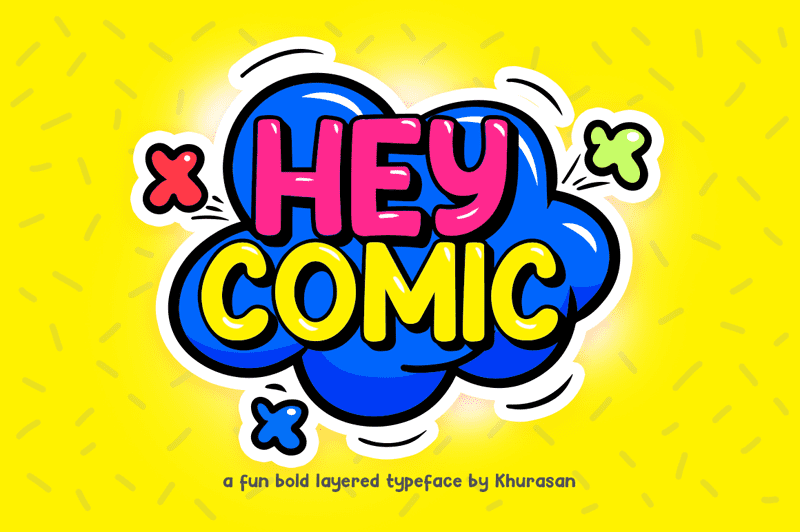The Ultimate Guide to Font Sizes and Styles: How to Choose the Right Font for Every Design
Day41 - AR1 "Discover the Best Font Sizes and Styles for Your Designs and Learn How to Use Them Like a Pro!"
As a designer, choosing the right font size and style is essential for creating visually appealing and readable designs. With so many options available, it can be challenging to know where to start. In this tutorial, we will explore the main font sizes and styles and how to use them effectively.
Part 1: Understanding Font Sizes
Before we dive into specific font styles, let's first discuss the basics of font sizes. Font size is measured in points (pt), and it refers to the height of the letters in a particular font. The larger the point size, the bigger the letters will appear on the page. Typically, the most common font sizes used in design range from 8pt to 72pt.
Part 2: Choosing the Right Font Size
The font size you choose will depend on the design you are creating and the intended purpose. For example, if you are designing a website or a poster, you will likely need larger font sizes to make the text legible from a distance. On the other hand, if you are designing a brochure or a business card, you may need smaller font sizes to fit more text into a limited space.
Part 3: Font Sizes for Different Themes
The theme of your design can also influence the font size you choose. Here are some general guidelines for font sizes based on different design themes:
Formal or Elegant Designs
Formal or elegant designs require fonts that convey a sense of importance and sophistication. Serif fonts like Times New Roman, Baskerville, and Garamond are excellent choices for this theme. Use larger font sizes between 14pt to 72pt to create a visually appealing design.
Professional or Corporate Designs
Professional or corporate designs require fonts that are easy to read and understand. Sans-serif fonts like Helvetica, Arial, and Open Sans are great choices for this theme. Use font sizes between 12pt to 18pt to create a clean and professional design.
Casual or Playful Designs
Casual or playful designs require fonts that are fun and easy to read. Handwritten or script fonts like Pacifico, Lobster, and Brush Script are perfect choices for this theme. Use font sizes between 8pt to 14pt to create a playful and inviting design.
Minimalist or Modern Designs
Minimalist or modern designs require fonts that are simple, clean, and easy to read. Sans-serif fonts like Montserrat, Roboto, and Proxima Nova are excellent choices for this theme. Use font sizes between 12pt to 24pt to create a modern and sleek design.
Part 4: Understanding Font Styles
Now that we have covered font sizes, let's dive into font styles. Font styles refer to the way a font looks, including its thickness, slant, and decorative features. Here are some of the most common font styles:
Serif Fonts
Serif fonts have small lines at the end of each letter stroke, making them appear more formal and elegant. Serif fonts like Times New Roman, Georgia, and Baskerville are great for formal and professional designs.
Sans-serif Fonts
Sans-serif fonts do not have small lines at the end of each letter stroke, making them appear more modern and sleek. Sans-serif fonts like Helvetica, Arial, and Open Sans are great for modern and minimalist designs.
Script Fonts
Script fonts imitate cursive handwriting and are perfect for creating a more personal and handwritten feel. Script fonts like Pacifico, Lobster, and Brush Script are great for casual and playful designs.
Display Fonts
Display fonts are decorative and are best used sparingly for headlines or titles. Display fonts like Bebas Neue, Playfair Display, and Chunk Five are great for creating eye-catching and attention-grabbing designs.
Part 5: Matching Font Styles with Design Themes:
Choosing the right font style for your design theme is essential for creating a cohesive and visually appealing design. Here are some general guidelines for matching font styles with design themes:
Formal or Elegant Designs
Serif fonts like Times New Roman, Baskerville, and Garamond are great choices for formal or elegant designs. These fonts convey a sense of importance and sophistication and pair well with classic design elements like gold foil or embossed lettering.
Professional or Corporate Designs
Sans-serif fonts like Helvetica, Arial, and Open Sans are great choices for professional or corporate designs. These fonts are easy to read and understand and pair well with clean and minimalist design elements like monochrome color schemes or geometric shapes.
Casual or Playful Designs
Script or handwritten fonts like Pacifico, Lobster, and Brush Script are great choices for casual or playful designs. These fonts are fun and easy to read and pair well with playful design elements like bright colors or whimsical illustrations.
Minimalist or Modern Designs
Sans-serif fonts like Montserrat, Roboto, and Proxima Nova are great choices for minimalist or modern designs. These fonts are simple and clean and pair well with modern design elements like flat illustrations or clean lines.
Part 6: Conclusion
Choosing the right font size and style is essential for creating visually appealing and readable designs. By understanding the basics of font sizes and styles and matching them with your design theme, you can create designs that are both beautiful and effective. Remember to experiment with different font sizes and styles to find the perfect combination for your next project!
#CanvaFonts
#DesignTips
#GraphicDesign
#Typography
#CreativeInspiration
#VisualMarketing
#SocialMediaDesign
#BrandIdentity
#ContentCreation
#DIYDesign

